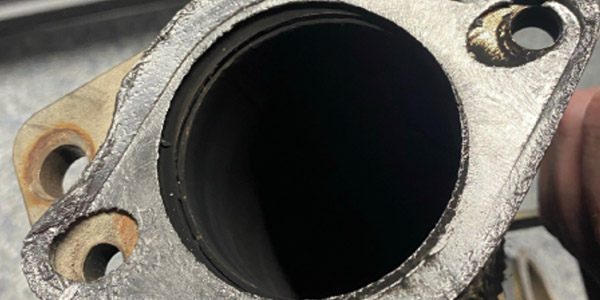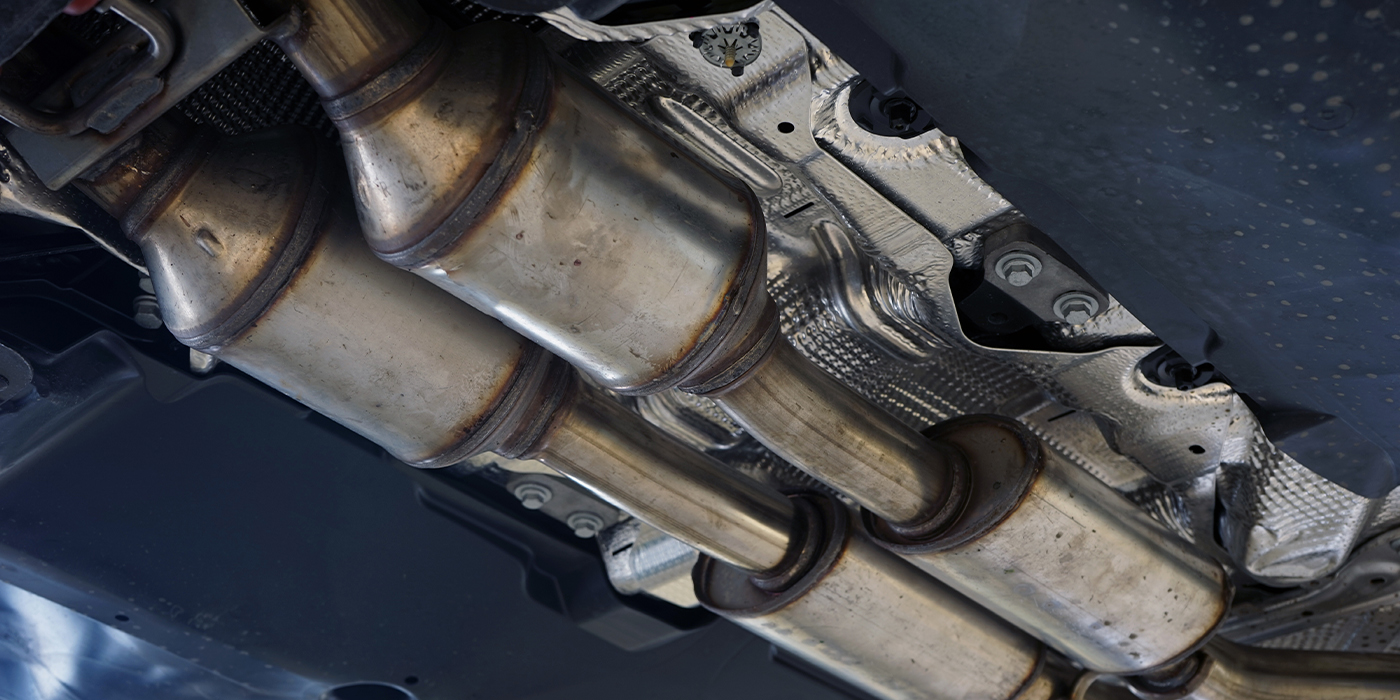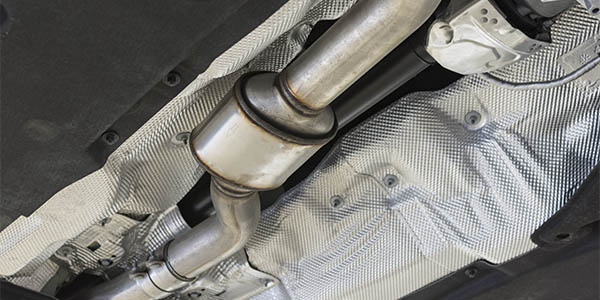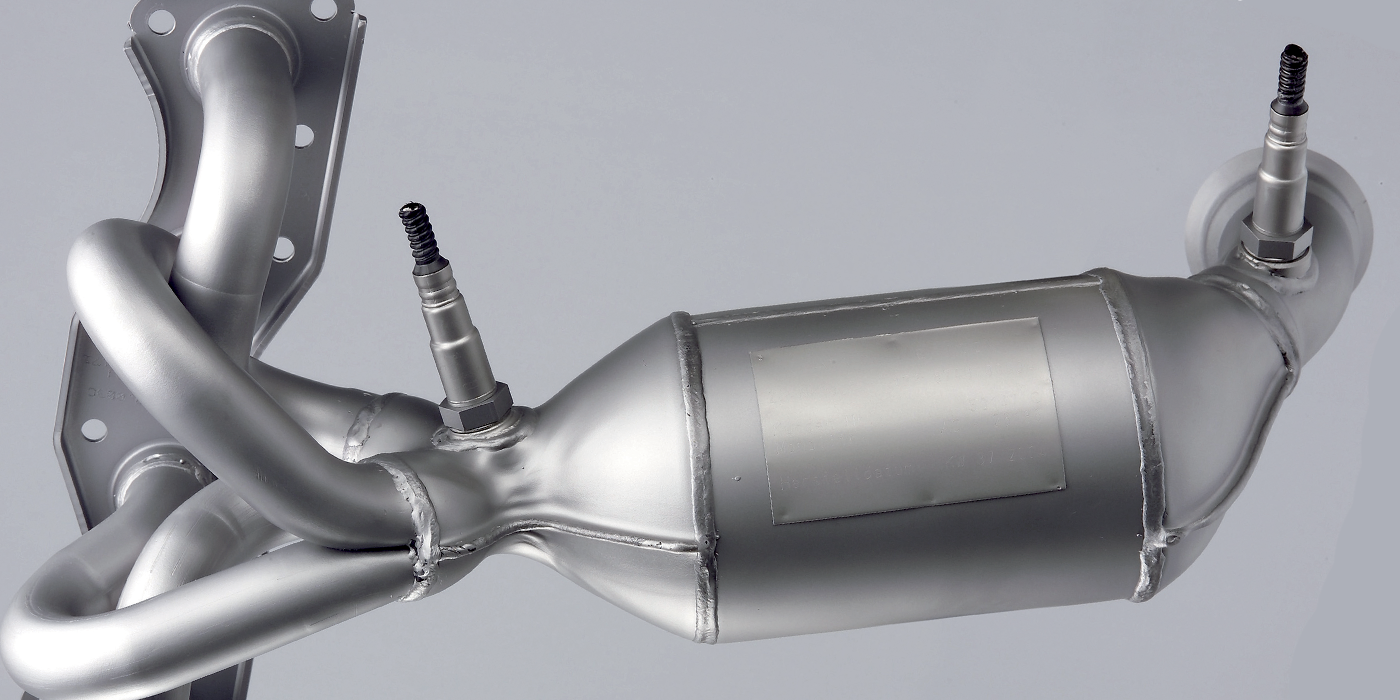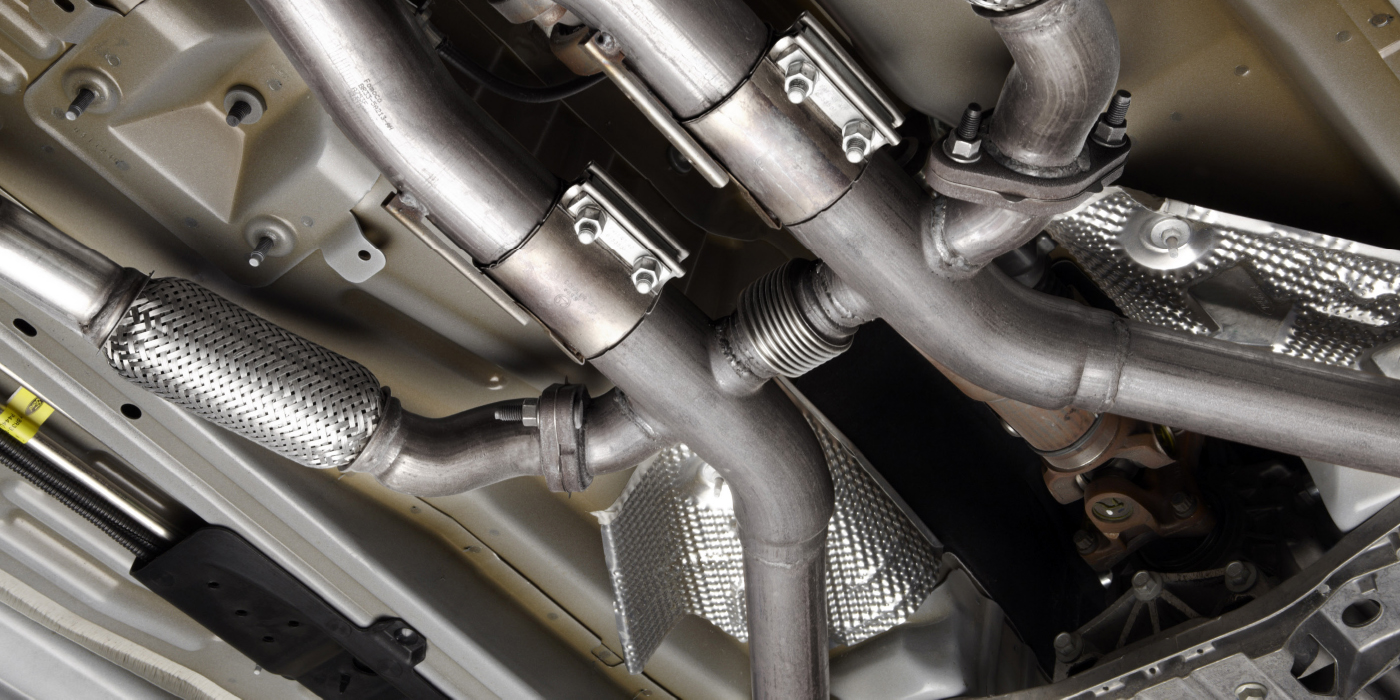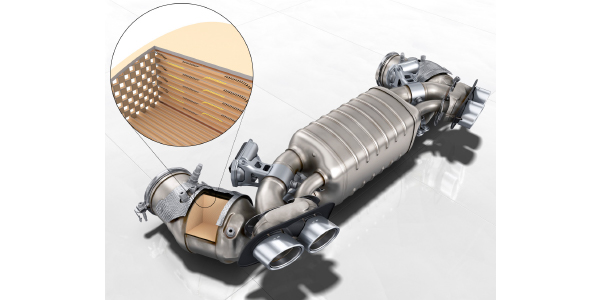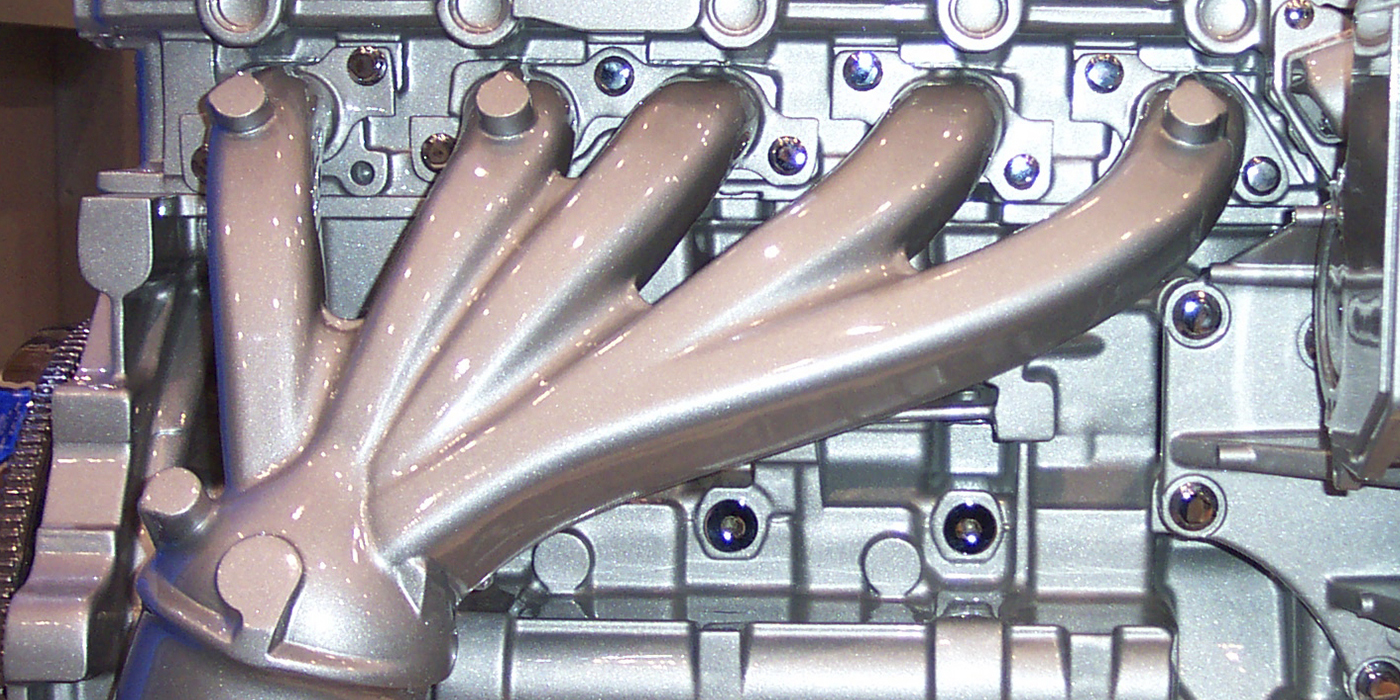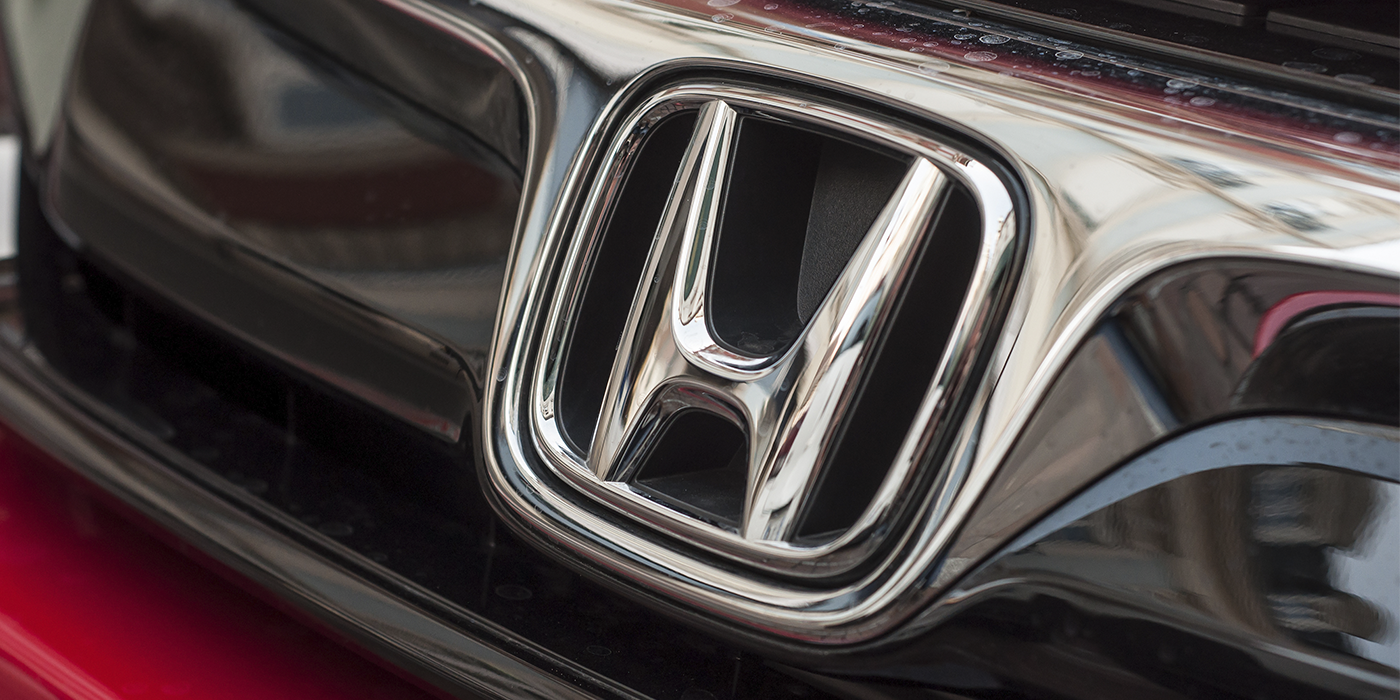If you confirm that there is an exhaust rattle/buzzing noise that sounds like it’s coming from the front exhaust tube on an applied vehicle, take the following actions.
Actions:
1. Inspect both of the catalyst front tube support brackets for breaks, cracks or missing bolts.
2. If you determine that the support brackets need to be replaced:
• Replace both support brackets and bolts. It is not necessary to replace the front tube assembly.
Note: For vehicles equipped with a 5-speed automatic transmission, you will also install exhaust tube mounting brackets.
Important: The purpose of “Actions” is to give you a quick idea of the work you’ll be performing. You must closely follow the entire Service Procedure as it contains information that is essential to successfully completing the repair.
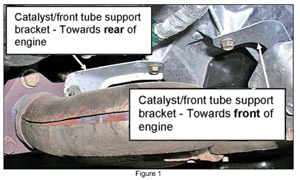
Applied Vehicles:
• 2004-’06 Maxima (A34);
• 2004-’07 Quest (V42); and
• 2003-’06 Murano (Z50).
Applied VINS:
• 2004-’06 Maxima, all VINs;
• 2004-’06 Quest, all VINs;
• 2007 Quest built before: 5N1BV*8U*7N136219;
• 2003-’05 Murano, all VINs; and
• 2006 Murano built before: JN8AZ08T*6W 402002 (2WD) or JN8AZO8W*6W 505916 (AWD).
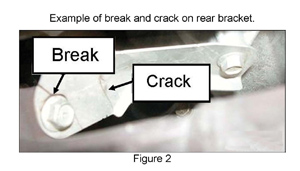
Service Procedure:
1. Inspect both support brackets on the catalyst front tube. See Fig. 1. Brackets are located between the exhaust flange of Bank 1 catalyst and the transmission housing. Check for breaks or cracks, and loose or missing bolts.
Note: Breaks or cracks may be found anywhere on the bracket body or at the mounting bolt holes. Cracks appear in a “hairline” form. See Figures 2 and 3.
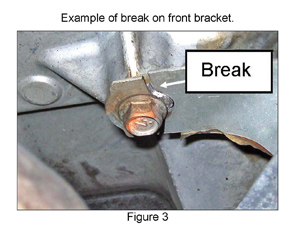
2. If either of the support brackets are broken/cracked, or have loose or missing bolts, replace both brackets and all their bolts as follows:
a. Remove the original bolts and brackets and discard.
b. If the vehicle is equipped with a 5-speed automatic transmission, install exhaust tube mounting brackets (upper and lower) and flange nuts. See Figures 4 and 5, and Fig. 6. Torque each nut to 30.4-39.2 Nm (3.1-4.0kg-m, 22.4-28.9 ft-lb).
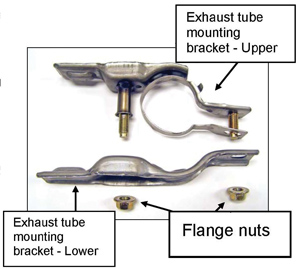 c. Loosely install the new support brackets and bolts.
c. Loosely install the new support brackets and bolts.
d. Position all brackets so that each bolt is centered in the bolt holes.
e. Hand-tighten each bolt to hold it in the centered position.
f. Torque each bolt to 19.0–25.0 Nm (1.93-2.43kg-m, 14-18.4 ft.-lb.), starting with the transmission side bolt.
3. Make sure the rattle/buzzing noise is gone. Conduct a short test drive involving several low speed part throttle accelerations.
Note: It is best to listen for unusual exhaust noise while driving with windows down and driving next to an object such as a wall, hedge or parked cars. Any unusual noises, if they exist, will reflect back to your car and are more noticeable.
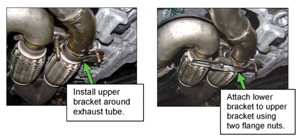 Courtesy of Mitchell 1.
Courtesy of Mitchell 1.
For more information on Mitchell 1 products and services, automotive professionals can log onto the company’s website at www.mitchell1.com.

